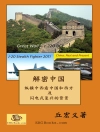Using ceremonials such as imperial weddings and funerals as models, T. Fujitani illustrates what visual symbols and rituals reveal about monarchy, nationalism, city planning, discipline, gender, memory, and modernity. Focusing on the Meiji Period (1868-1912), Fujitani brings recent methods of cultural history to a study of modern Japanese nationalism for the first time.
Using ceremonials such as imperial weddings and funerals as models, T. Fujitani illustrates what visual symbols and rituals reveal about monarchy, nationalism, city planning, discipline, gender, memory, and modernity. Focusing on the Meiji Period (1868-19
表中的内容
LIST OF FIGURES AND MAPS
PREFACE AND ACKNOWLEDGMENTS
I
Introduction: Inventing, Forgetting, Remembering
Nationalism and the Emperor in Tokugawa Japan
Mnemonic Sites
Toward a Historical Ethnography of the Nation-State
Visual Domination
PART I: NATIONAL MISE-EN-SCENE
2
From Court in Motion to Imperial Capitals
Tokyo as Temporary Court (anzetisho)
Out from behind Jeweled Curtains
The Weight of the Imperial Past
From Temporary Court to Imperial Capital (teito)
National Landscape and National Narrative
PART 2: MODERN IMPERIAL PAGEANTRY
Overview
3
Fabricating Imperial Ceremonies
Civilization, Prosperity, and Power
Spectacles of Antiques
4
The Monarchy in Japan’s Modernity
The Emperor’s Two Bodies
The Politics of Gendering and the Gendering of Politics
PART 3: THE PEOPLE
5
Crowds and Imperial Pageantry
Imperial Pageants as National Communions
Mobilizing the Masses
Popular Folklore and the Folklore of the Regime
6
Epilogue: Toward a History of the Present
The Monarchy and Tradition The Imperial Gaze
NOTES BIBLIOGRAPHY
INDEX
关于作者
T. Fujitani is Associate Professor of History at the University of California, San Diego.












